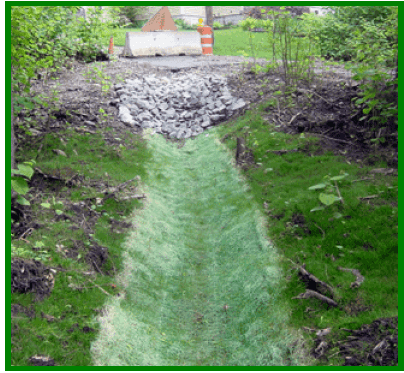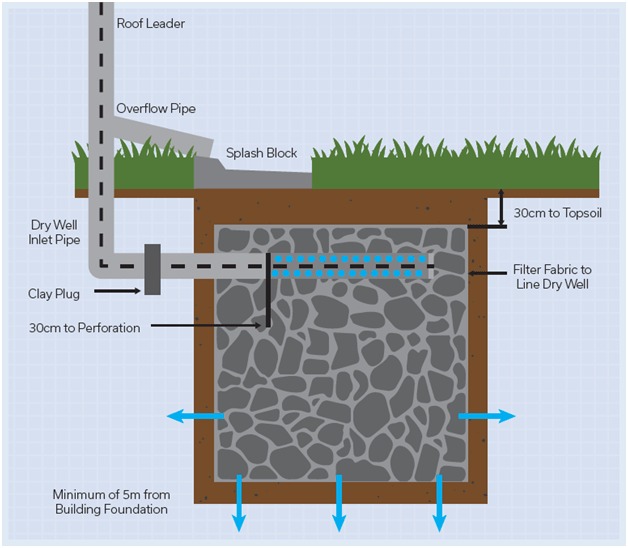Stormwater Management in Ontario: Balancing Urban Growth with Ecological Integrity
In Ontario, a province known for its vibrant urban landscapes and environmental diversity, managing stormwater effectively is crucial. Consequently, the region’s approach to stormwater management is multi-dimensional, skillfully merging innovative methodologies with a strong commitment to environmental conservation. Furthermore, Ontario’s strategies serve as a model for sustainable urban development, balancing the demands of growth with the imperative to protect natural resources.
[toc]
Key Takeaways
- Ontario’s advanced strategies in stormwater management are groundbreaking.
- The province’s technical frameworks and environmental protocols are highly detailed.
- Engineering firms like Elmid Design Inc are pivotal in implementing these strategies.
Part 1: Exploring the Core Elements for Stormwater Management in Ontario
Stormwater Management Plan: A Detailed Overview
The stormwater management plan in Ontario, as outlined in the official documentation, is a critical component of urban planning. These plans focus on systems that manage water from both frequent and infrequent storm events. Moreover, they ensure that urban development harmonizes with the natural water cycle.
Stormwater Management in Ontario; Technical and Procedural Frameworks: A Closer Look
The comprehensive Stormwater Management Planning and Design Manual is central to Ontario’s approach. This manual, regularly updated, offers invaluable guidance for urban planners and environmentalists. Importantly, it is a guiding framework for planning, designing, and reviewing stormwater management practices.
Environmental Design Criteria: Broadening the Perspective
In addressing the challenges of urbanization, Ontario not only focuses on functionality but also diligently considers the environmental impact. The province’s strategies don’t just highlight water quality and stream morphology; they also extend to moving beyond simple end-of-pipe solutions. This comprehensive approach underlines and reinforces Ontario’s unwavering commitment to environmental protection.
Elmid Design Inc: Leading the Way in Stormwater Management in Ontario
Elmid Design Inc, recognized by the Professional Engineers Ontario, stands out for its innovative approach to stormwater management. Their practices go beyond traditional methods, setting new benchmarks in the field. Elmid Design Inc contributes significantly to urban resilience and environmental stewardship by aligning with Ontario’s standards.
Part 2: Advanced Applications and Strategic Implementations
Engineering Costs and Financial Planning in Stormwater Management
In Ontario, the financial aspect of stormwater management is as crucial as the environmental one. Consequently, Therefore, engineering costs include planning, designing, and constructing all stormwater management works. Thus, for effective budgeting, these costs are often estimated as a percentage of the total construction cost, ensuring financial feasibility alongside environmental sustainability.
Low Impact Development: A Sustainable Approach for Stormwater Management in Ontario
Low Impact Development (LID) in Ontario presents a sustainable approach to managing stormwater. This method focuses on mimicking natural hydrological cycles and minimizing disruption to the environment. Furthermore, LID strategies often incorporate green infrastructure, such as permeable pavements, green roofs, and rain gardens, which absorb and filter stormwater. Therefore, these techniques not only manage stormwater effectively but also enhance urban green spaces, contributing to a healthier urban environment.
Moreover, the Low Impact Development Stormwater Management Guidance Manual emphasizes maintaining biodiversity and aquatic life. It advocates for practices that preserve natural habitats and water quality. Thus, this approach is crucial for preserving groundwater and reducing flood risks. Additionally, by promoting infiltration, LID techniques replenish local aquifers, an essential aspect of sustainable water management.
In line with this, Ontario’s commitment to minimizing environmental impact while addressing urban needs is clearly reflected in its adoption of LID practices. Therefore, the province’s focus on sustainable development ensures that urban growth does not come at the expense of the environment. Consequently, through LID, Ontario is setting a precedent for other regions to follow, showcasing how urban development and environmental stewardship can go hand in hand.
Policy Development and Public Participation
The Ontario Ministry of the Environment and Climate Change also actively seeks public input for setting stormwater management policies. This participatory approach ensures that the policies developed are environmentally sound and reflective of the community’s needs and perspectives.
Elmid Design Inc: Integrating Expertise with Innovative Practices
Moreover, Elmid Design Inc, with its PEO certification, exemplifies the blend of expertise and innovation in stormwater management. Their approach to integrating advanced technologies and sustainable practices showcases their commitment to contributing positively to Ontario’s environmental goals.
Future Directions in Stormwater Management
Lastly, looking ahead, the future of stormwater management in Ontario appears to be on a progressive trajectory. With firms like Elmid Design Inc at the forefront, the province is well-positioned to continue advancing its stormwater management strategies, ensuring urban development and environmental preservation are harmonized.
Introduction to Stormwater Management Reporting
Preparing a stormwater management report in Toronto requires a detailed understanding of both the local environmental conditions and regulatory requirements. This report is crucial for ensuring that new developments do not adversely affect the area’s water management system.
Assessing Pre-Development and Post-Development Conditions
One of the first steps in the report is assessing pre-development and post-development conditions. This involves comprehensively analyzing how the proposed development will impact the site’s natural hydrology. Important aspects to consider include changes in surface runoff, infiltration rates, and the potential for flooding.
Designing Orifices for Effective Water Flow Control
Orifice design is another critical component of stormwater management. An orifice in a stormwater system is to control the water flow, thereby reducing the risk of flooding during heavy rainfall. The design must be precise to ensure that it meets the area’s specific needs.
Implementing Storage Tanks for Stormwater Management
Storage tanks are vital in managing stormwater, especially in areas prone to heavy rainfall. These tanks temporarily store excess stormwater, releasing it slowly to prevent overwhelming the drainage system. The report should detail these tanks’ size, placement, and capacity.
Ensuring Quality and Quantity Control in Stormwater Management
Quality control in stormwater management is a critical aspect, focusing on preventing pollutants from entering waterways. This involves implementing various filtration and sedimentation techniques designed to capture and remove contaminants before they reach natural water bodies. Furthermore, these methods help maintain the ecological balance, ensuring that aquatic life and water quality are not adversely affected. In addition, regular monitoring and maintenance of these systems are essential to ensure their effectiveness over time.
Conversely, quantity control in stormwater management deals with managing the volume and rate of stormwater runoff. This is crucial to prevent flooding and erosion, damaging property and harming local ecosystems. Therefore, implementing retention basins, permeable pavements, and green roofs are among the strategies to mitigate these risks. Additionally, these solutions help recharge groundwater and maintain the natural hydrological cycle, thereby contributing positively to the urban environment.
Finally, the report should outline comprehensive quality and quantity control strategies, ensuring the development adheres to Toronto’s environmental standards. Thus, these measures must be integrated into the overall design and construction plans. Moreover, this approach addresses the immediate concerns of stormwater management and contributes to the long-term sustainability and resilience of urban developments. Hence, adhering to these guidelines will ensure that developments meet current standards and are prepared for future environmental challenges.
Elmid Design Inc’s Expertise in Stormwater Management Reporting
With its extensive experience and PEO certification, Elmid Design Inc can provide valuable insights and services in preparing comprehensive stormwater management reports. Their expertise ensures that all aspects of stormwater management are thoroughly addressed, complying with Toronto’s regulatory requirements.
Geographic Locations That We Service:
Our Licensed Professional Engineers specialize in preparing comprehensive stormwater management reports, lot grading plans, and drainage plans to obtain site plan approval and building permits in Ontario, including a wide range of municipalities. Each area boasts unique features and requirements, making our tailored approach essential for success.
Toronto and Surrounding Areas
In the vibrant heart of Ontario, we service Toronto (City of Toronto) and surrounding areas. Additionally, we cover Oshawa (City of Oshawa), Pickering (City of Pickering), and Clarington (Municipality of Clarington). Furthermore, our expertise extends to Ajax (Town of Ajax), Whitby (Town of Whitby), Brock (Township of Brock), Scugog (Township of Scugog), and Uxbridge (Township of Uxbridge).
Halton Region
Moving to the Halton Region, our services encompass Burlington (City of Burlington) and Halton Hills (Town of Halton Hills). Also included are Milton (Town of Milton) and Oakville (Town of Oakville).
Peel Region
In the Peel Region, we provide services in Brampton (City of Brampton), Mississauga (City of Mississauga), and Caledon (Town of Caledon).
York Region
Our services in the York Region cover Vaughan (City of Vaughan), Aurora (Town of Aurora), and East Gwillimbury (Town of East Gwillimbury). We also cater to Georgina (Town of Georgina), Markham (City of Markham), Newmarket (Town of Newmarket), Richmond Hill (City of Richmond Hill), Whitchurch-Stouffville (Town of Whitchurch-Stouffville), King (Township of King), and Bradford-West Gwillimbury (Town of Bradford-West Gwillimbury). Each municipality here offers a distinct setting, requiring our specialized approach.
Other Southern Ontario Cities and Towns
We also serve many other cities and towns in Southern Ontario. These include Hamilton (City of Hamilton), St. Catharines (City of St. Catharines), Niagara on the Lake (Town of Niagara on the Lake), Brant (County of Brant), Cambridge (City of Cambridge), Kitchener (City of Kitchener), Waterloo (City of Waterloo), and Woodstock (City of Woodstock). Furthermore, we operate in Guelph (City of Guelph), Centre Wellington (Township of Centre Wellington), Shelburne (Town of Shelburne), Orangeville (Town of Orangeville), New Tecumseth (Town of New Tecumseth), Essa (Town of Essa), Collingwood (Town of Collingwood), Wasaga Beach (Town of Wasaga Beach), Barrie (City of Barrie), Midland (Town of Midland), Orillia (City of Orillia), Ramara (Town of Ramara), Minden Hills (Town of Minden Hills), North Kawartha (Town of North Kawartha), Kawartha Lakes (City of Kawartha Lakes), Peterborough (City of Peterborough), Selwyn (Town of Selwyn), and Brighton (Municipality of Brighton).
We'd love to hear from you
Get in touch with us
Tell us about yourself by completing the form below. Your information is always kept confidential.
Reach us through
-
13025 Yonge St, Unit # 201G, Richmond Hill, ON, L4E 1A5 - +1 647 745 4507
- info@elmid.ca
Send us a Message







